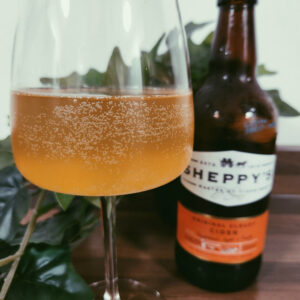
A helpful beginner’s guide to pairing cheese and cider
Back to all We live in a world where cheese

Have you ever wondered how is cider made? Cider, a popular drink across many countries, is made with fermented apple juice. The process of making cider has been around for centuries, and while the steps may vary depending on the type of cider being produced, the basics of harvesting apples, pressing apples, and fermenting the juice remain the same.
In this ultimate guide, we will take a closer look at the cider making process and explain how much alcohol is in cider. So, join us on our journey to understanding how is cider made!
Ah, the sweet nectar of the gods! Okay, maybe that’s a bit of an exaggeration, but cider is certainly a delicious treat that has been around since time immemorial.
Cider is an alcoholic beverage made from fermented apple juice. It has been enjoyed around the world for centuries, with its history dating back to ancient times. In fact, in some cultures, cider has been considered a status symbol and a sign of wealth due to its rarity and difficulty of production. In the Middle Ages, it was even more popular than beer!
Today, cider is still enjoyed as a refreshing drink on hot days and as a festive accompaniment to meals. It is produced in many different styles, ranging from dry and sparkling to sweet and fruity. No matter what your preference is, there is something out there for everyone! So, raise your glasses and get ready to toast with a delicious glass of cider. Cheers!
Apple harvesting for cider production traditionally occurs in September/October when apples ripen. Harvested apples go through a process of grinding and pressing, either mechanically or by hand.
Through the pressing process juice is separated from the solids and then put into containers for fermentation. Fermentation turns the natural sugars found in apple juice into alcohol. Depending on the method used and desired strength of the cider, it may take anywhere from a few weeks to a few months for it to finish fermenting.
On average, hard ciders contain around 5% ABV. However, some craft ciders may have up to 7% ABV. After the cider is finished fermenting it may require carbonation, fining, filtration or any other number of processes before it’s ready for consumption!
Apples are the essential ingredient in cider, so it’s important to know when and how to harvest them for the best flavor! There are many varieties of apples available for cider-making, such as Granny Smiths, Golden Delicious, and McIntosh. Each of these varieties has its own unique flavor profile and offers something special to the cider-maker.
Harvesting usually takes place in late summer or early fall, when the apples are fully ripened and ready to be picked. Traditionally, apple trees were harvested by hand, but more recently modern methods such as shaking trees with a machine have been introduced.
When harvesting apples, you’ll need only the best-looking specimens; discarding any that look rotten or damaged.
At most cider mills, the apples are washed with a gentle cleaning solution that removes any dirt and residue from the apples. Washing the apples ensures that all of the bacteria and other contaminants are removed before they are used in the cider making process.
Why is washing apples important? Well, apples can contain a variety of microorganisms that can ruin your hard work if not properly cleaned. Nobody wants an unpleasant surprise after all the hard work of harvesting and pressing apples! Not to mention, it would be a real shame to end up with cider that tastes like dirty apples instead of fresh apple juice.
When making cider, the apples need to be grinded in order to release the juices that will make up the base of your cider. This process involves taking your harvested apples and breaking them down into smaller pieces so that the juice can be extracted more easily.
When you’re grinding your apples, it’s important to make sure you’re not grinding them too fine – as this can make it more difficult to separate the juice from the solids later on in the cider making process. It’s also important to note that the finer you grind your apples, the sweeter your cider will be since more of the natural sugars are released from the fruit!
If you want to get creative with your cider, try experimenting with different apple varieties to add a unique flavour profile to your cider.
Making cider involves a lot of hard work and patience – and pressing apples is no exception. When it comes to creating the perfect batch of cider, pressing apples is a must. This process involves squeezing all of the juice out of the apple pulp. It may sound simple, but it can take a long time to do by hand!
But why is pressing apples so important for making cider? Without this step, you won’t be able to extract the delicious juice out of the apples, which is necessary for the fermentation process. In other words, without pressing apples, you won’t have any cider!
So, if you’re looking to make your own cider at home, you’ll need to stock up on arm strength and get ready to do some serious apple pressing! Your arms may not thank you now, but your taste buds will thank you later.
When it comes to making delicious, flavourful cider, fermentation is the name of the game! Fermentation is a process of converting the sugars found in apples into alcohol, which gives cider its signature flavor and alcohol content. It’s an essential step for producing a quality cider that you’ll love sipping on.
Making non-carbonated cider requires a controlled fermentation process. Once the apples have been pressed, yeast is added to the juice to feed on the sugars, converting them into alcohol. This process needs to be monitored closely, as too much or too little yeast can ruin the taste of the cider.
During the fermentation process, most of the natural sugars are converted into alcohol, so a good cider will generally have a relatively low sugar content. This means that your cider won’t be overly sweet, but still has plenty of flavour and complexity.
So when you’re sipping your delicious cider, remember to thank the helpful little yeasts for their hard work in turning all that sweet apple juice into something truly special!
Let’s break it down. Generally speaking, cider contains between 4-8% alcohol by volume (ABV) but can get to 12%. This is slightly higher than most beers which have an ABV of 3-5%. So, if you’re looking for a stronger beverage than beer but not as strong as spirits, then cider is the perfect option!
But don’t be fooled – a higher ABV doesn’t necessarily mean more flavor. Some ciders might taste less sweet than a beer of a similar ABV, and others might be packed with fruity notes. If you’re looking for something sweeter, it’s best to try out different brands to find one that suits your tastes.
We suggest buying two bottles – one with a higher ABV and one with a lower ABV – so you can sample both and decide which one you like better. Or you could just go for the gusto and opt for the strongest cider available (just make sure you enjoy it responsibly).
With a little bit of love and a lot of hard work, you can create your own delicious batch of cider! It all starts with harvesting apples, then washing them, grinding them, pressing them, and fermenting them. After that, it’s time to enjoy!
But don’t let the process be daunting! Once you get the hang of it, you’ll be a pro in no time. With a little bit of practice and patience, you can become a master cider maker. So what are you waiting for? Get out there and start making your own cider!
One last thing, end on a strong joke… Did you hear the one about the apple who went into a bar? He said “Cider me!”
And there you have it: the ultimate guide on how cider is made!

Back to all We live in a world where cheese

Back to all When we first started this blog, I

Back to all KEY TAKEAWAYS 4.8% ABV Amber hue Bittersweet